China Steam Tour October-November 2012
The Last Great Steam Show on Earth
Part 2
Completed: 11 November 2012
| Pingzhuang area | Fuxin area | Tiefa / Daobingshan | Part 1 |
I've produced a DVD of this trip and also of the many other trips I've made to China from the 1990s to date. Click here to see the list of all my China DVDs.
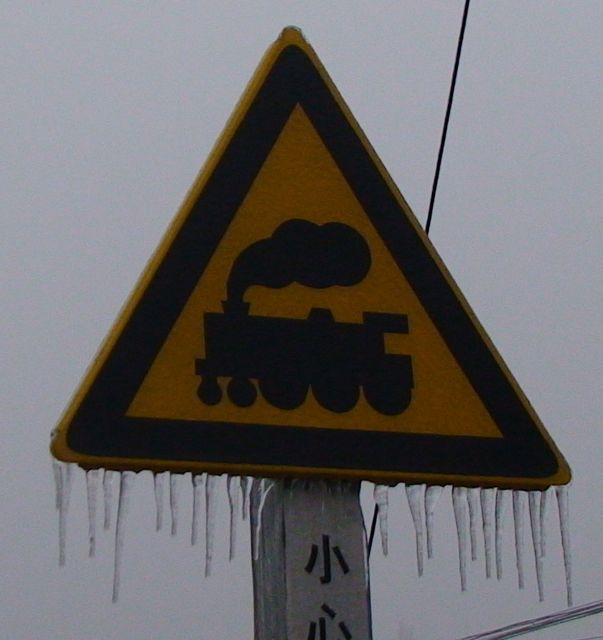
all photos © John Raby, 2012
If you like these still images, you will probably also enjoy the video footage on DVD when it's ready. Email me and I'll let you know when it is available with a special pre-publication offer.
Itinerary for Part 2
31 Oct Day 11. Baiyin – Lanzhou by private bus, overnight to Beijing by train
It just so happened that we had selected to travel on T28 the Lhasa - Beijing train. One slight advantage was that the hard sleepers we had were semi-hard in that it was just like a soft sleeper compartment but three berths high instead of 2 and with an opening rather than a closeable door to the corridor.
1 Nov Day 12. Beijing to Pingzhuang by minibus, overnight Pingzhuang
Arrival in Beijing was on time and our bus crawled through the Beijing traffic to collect our three new participants from the Dong Fang Hotel around 9 am. Then it was a long bus ride via Chengde to Pingzhuang for the night. Arrival in Pingzhuang was after sunset around 5 pm but we saw our first steam loco of part 2 arrive from the China Rail connection at the washery/stabling point. Jun tells me that the working locos now face towards the mines and away from China Rail and this was true of this loco.
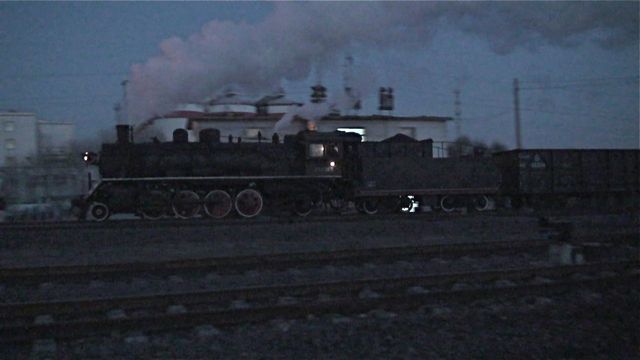
2 Nov Day 13. Pingzhuang cluster (Pingzhuang, Yuanbaoshan, Hongmiao)
Just had our least successful day of the whole trip. A combination of factors; overcast, windy, Yuanbaoshan track in dreadful state so locos shuffling along even more than usual and two cases where the locals were less than welcoming (at the depot and lineside near the river bridge). Headed back to Pingzhuang for the last hour and had a loco in our sights (deflectored SY) at Pingzhuang Nan which didn't leave before it got cold and dark. Add to that one member of the party falling off a hillock in the morning and getting a cut beside his eye and on his nose. One JS worked both passenger trains at Yuanbaoshan and went off to bring coal wagon to the junction just short of Fengshuigou from the new branch to the north during its morning layover there.
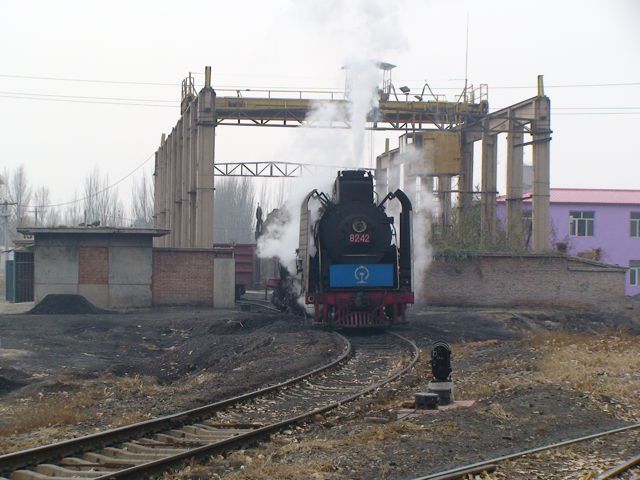
JS 8242 reported scrapped during a TEFS July 2012 visit worked the passenger/mixed trains today.
3 Nov Day 14. Pingzhuang cluster
A day at Pingzhuang. The morning started out cold and cloudy with a bit of snow in the air but brighten up (a bit) and got warmer later on. Two managers shoo-ed us away at the stabling point at morning shift change explaining the heightened security during the Communist Party convention meant we shouldn't be there. We had no problems at other locations along the line and hope for a better reception tomorrow (Sunday) morning.
Two locos deflectored SY 1083 and SY 1017 headed to the mines with empties and the third loco SY 1085 took a long train of coal wagons to China Rail at Pingzhuang Nan. It returned to the washery light engine.
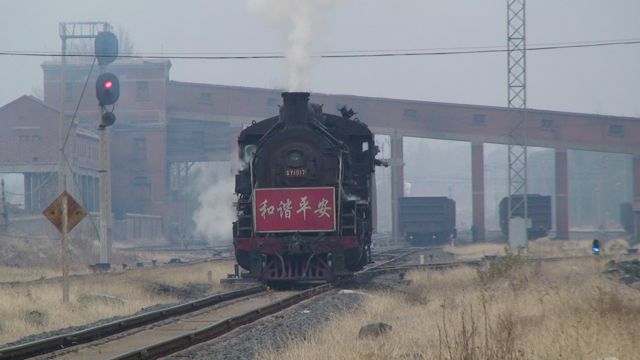
SY 1017 at the washery/stabling yard Zhuangmei
We found SY 1083 bringing a short train of coal to Erjing at 11:30. The loco came off the train and parked up so the crew could have lunch in the loco cab alongside the control office. This loco finally returned with two wagons of slag around 5pm. SY 1764 (probably from the open cast mine fleet) appeared at the washery yard mid afternoon.
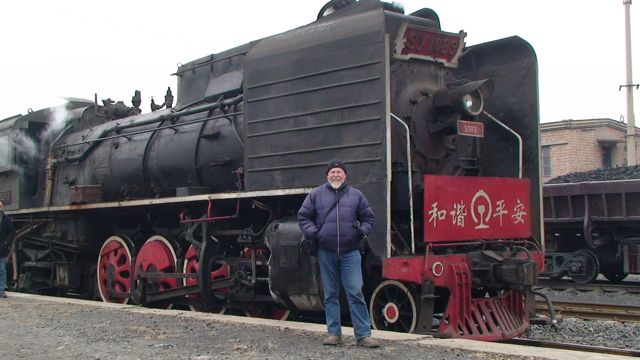
Your author dressed for the increasing cold at Gushan Yijing

John Athersuch was our birthday boy today and we celebrated with good food, beer, wine and birthday cake. Our guide Jun is standing behind him. Happy birthday, John!
4 Nov Day 15. Pingzhuang cluster then minibus to Fuxin
A day of contrasting weather. This was our transfer day from Pingzhuang to Fuxin. The morning after rain the night before started with freezing fog. We abandoned Pingzhuang early because we knew our drive to Fuxin would be slow and encountered serious snow en route but after exiting the summit tunnel it turned to a steady rain that continued when we reached Fuxin. We had a late afternoon visit to the loco depot where 4 locos were 'on shed' which brings our working steam total to 32 for the trip so far.

Freezing fog at Pingzhuang

Icicles on the crossing lights
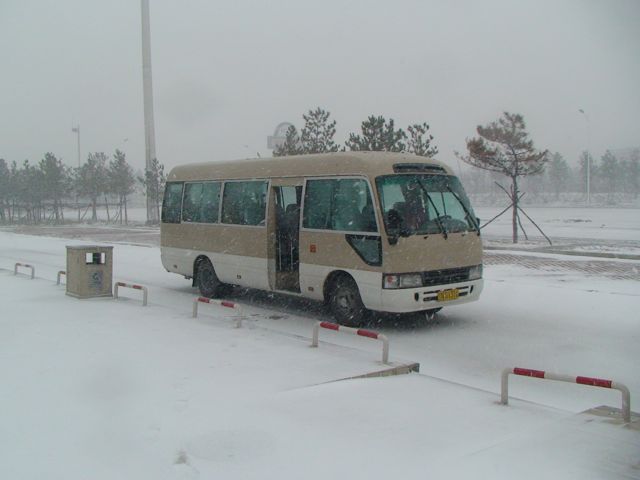
Our bus at a comfort stop on the Chifeng - Chaoyang expressway
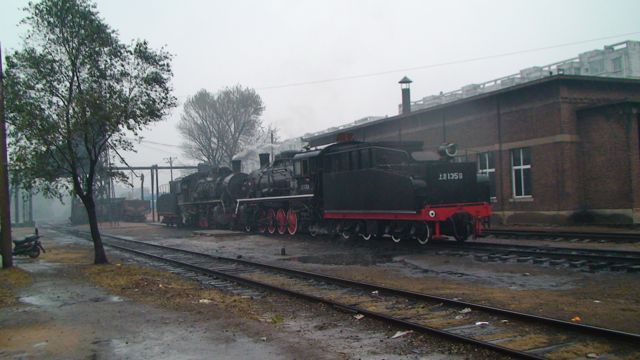
Newly painted (ex-works?) SY 1359 along with another SY at the loco depot
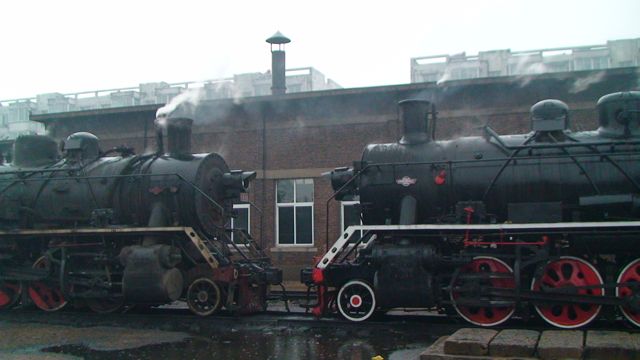
2 SY outside the depot in the rain
5 Nov Day 16. Fuxin
The rain stopped and we had some snow flurries but otherwise it was windy and cold with the wind dropping late afternoon and a glimpse of sun. We started at the stabling point (confirming that the passenger no longer runs) and, with permission arranged, we were able to visit the stabling point inside the fence and go round the workshop. We later went trackside at Wulung mine and, after lunch, at Pingan mine before moving to the power station end of the main yard and a end-of-day look at the depot area. This was our best day so far on Part 2 of the trip and, if the weather improves in the next 3 days, we can do even better,
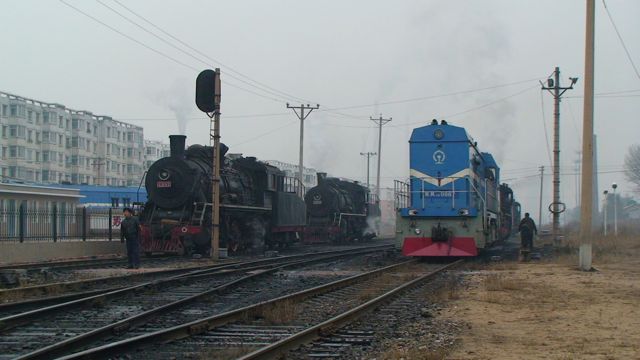
Four steam and 1 diesel line up at shift change with a second diesel on the line to China Rail. An additional steam loco was on the spur near the crossing.
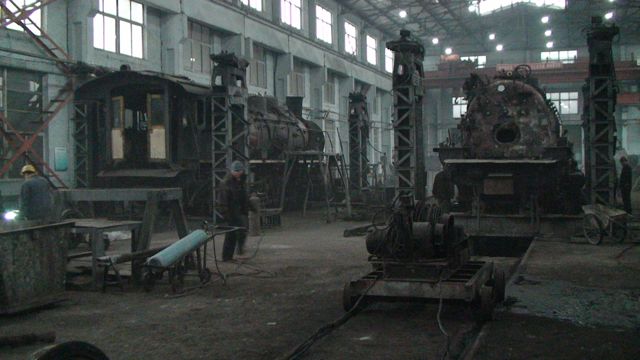
Inside the works, 2 locos receive a heavy overhaul with one other loco in the running repairs shop for attention to its valves.
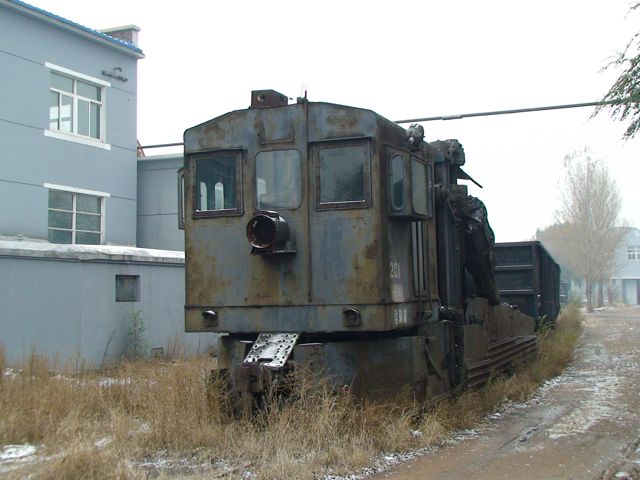
Dumped in the Work's yard, a different design of Jordan spreader
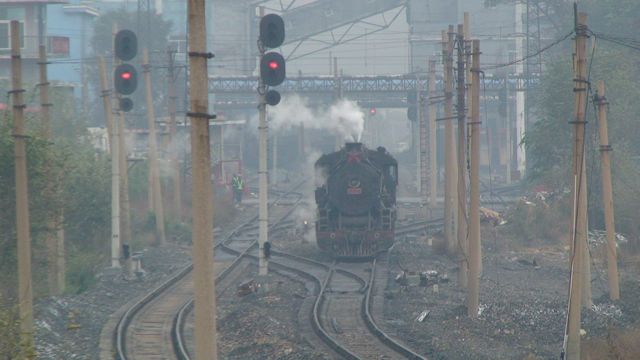
Decorated SY in amongst the mass of poles (some from the former electrification) outside Wulung mine.

Between Pingan and Wulung mines, a loco waits to propel a spoil train up the spoil heap.
At the end of our second day, the loco tally is:
In steam (9 locos): SY 0770, 1210,
1319, 1320, 1359, 1378, 1396, 1397, 1818
Heavy overhaul (workshop): SY 0988, 1195
Running repairs (workshop): SY 1460
Diesels: DF5D 0066, 0067, 0068
Out of use: SY 0941 (donor loco for spares?)
Dumped: SY 0127, 0576, 1088 + 2 more unidentified
Nine SY locos in use seems to be up on recent tallies. The passenger coaches
are parked up at the loco depot and no passenger trains have been seen. This
ties in with a report from Isao Kanda that these have finished.
Our number collector now that Tony has left is Richard Stanley.
6 Nov Day 17. Fuxin
A crisp, sunny day. We started off with the shift change at Pingan and then drove part way up the spoil tip and saw 3 trains climb up before lunchtime. After lunch we visited the Taiping stabling point, the open air museum and view into the open cast mine (where we saw a loco propelling coal north east towards Pingnan. We caught up with the train at Chengnan and watched it haul its empties back towards Wulung mine before finishing the day at the 'power station' level crossing with 3 steam locos in the frame around sunset.
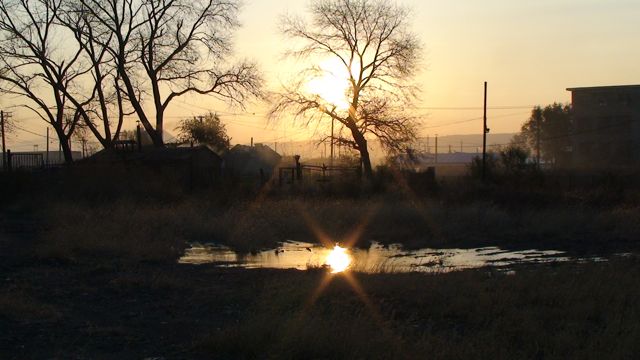
Sunrise looking towards Pingan mine around 7 am. I should have video of steam locos passing a similar view taken some minutes later.

Three locos at Pingan at shift change. We saw 7 steam locos and 3 diesels over the period of the shift change.
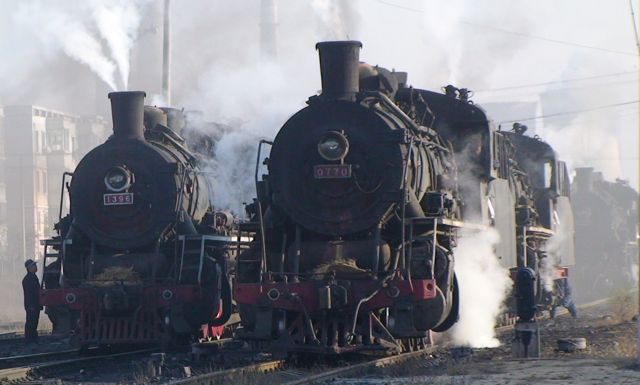
4 locos visible at Pingan at shift change around 8 am
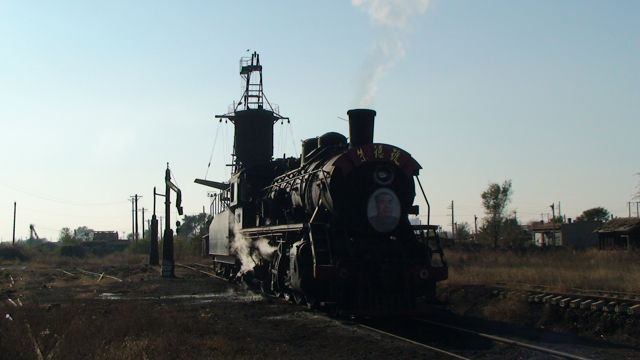
Decorated loco SY 1395 named Zhu De on standby at the Taiping stabling point

Coal empties return from Chengnan to the Wulung mine.
7 Nov Day 18. Fuxin
We started at Wulung Mine and moved to Pingan Yard west end for shift change. We then went up the spoil tip hoping for a morning ash train from the power station that did not materialise. In the afternoon, we explored the line south west (diesel today but steam yesterday), found Pingan mine curve bad for light in the afternoon and finished up at the power station end of Pingan Yard.
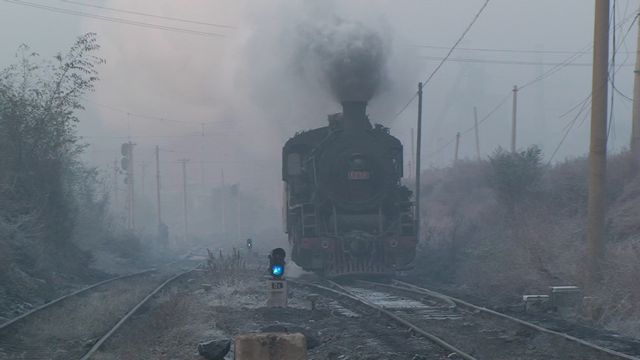
Early morning frost and mist near Wulung Mine.
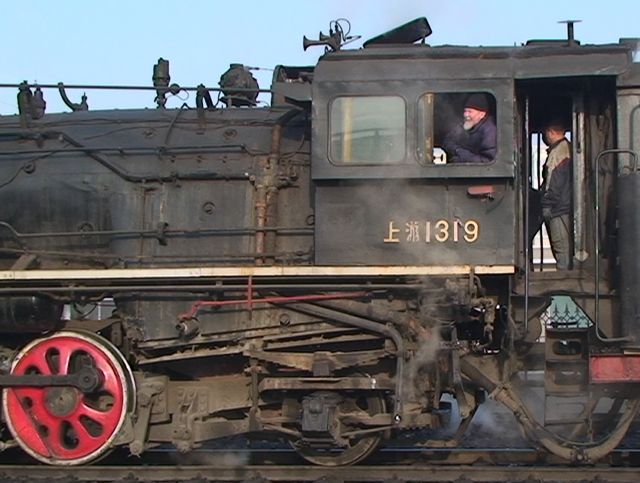
When invited to cab a loco at the morning shift change, I chose the one with the nicest set of numbers!
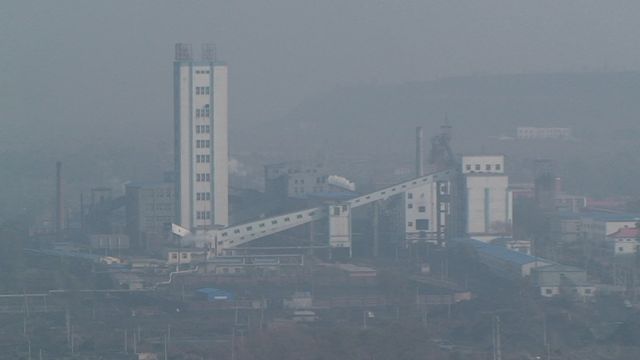
Misty view of Wulung Mine from the spoil tip with a spoil train running behind it.
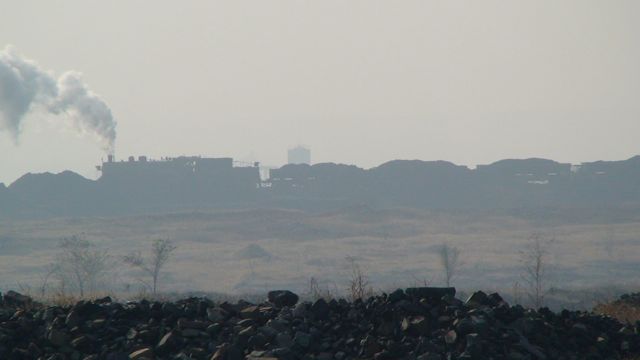
Spoil train in the mist.
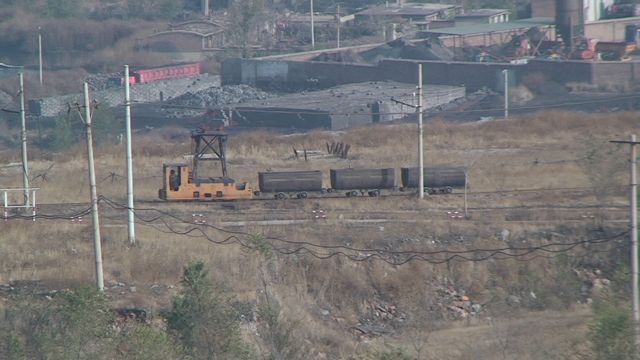
Narrow gauge mine electric with high tower adaptation for its pantograph seen from the top of the spoil tip.
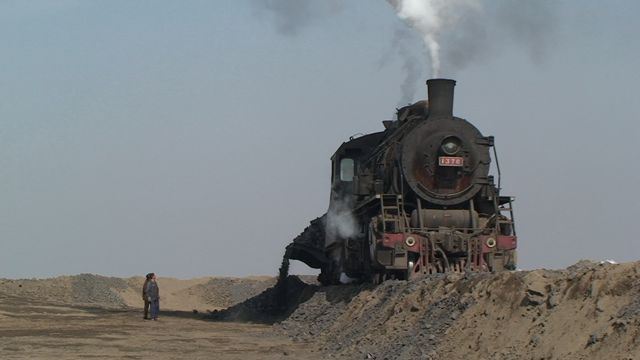
On the spoil tip, tipping rock from which coal will be recovered by a team of workers.
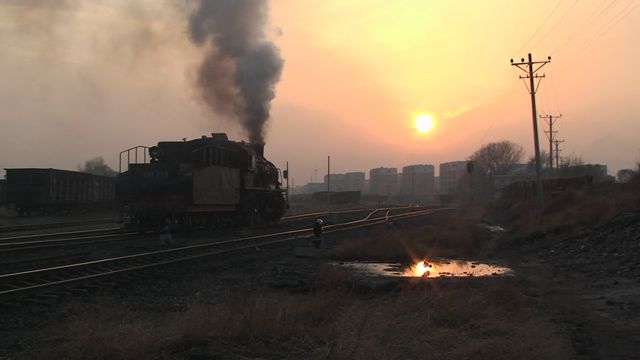
The power station crossing end of Pingan yard as the sun sinks into the murk.
8 Nov Day 19. Fuxin – Shenyang - loco workshop & museum - Daobingshan (Tiefa)
Early morning at the beginning of the spoil tip line followed by the crew change at Pingan Yard around 8 am. After breakfast and check out, we took the bus up the tip and staked out the top of the spoil tip but only one train came up around 12 pm which stopped well short of us and then we gave up. We got down to Wulung Crossing to see the power station ash train heading up the tip so turned around and drove back to the top with some spectacular results. The drive to Daobingshan took about 3.5 hours mostly on expressways.
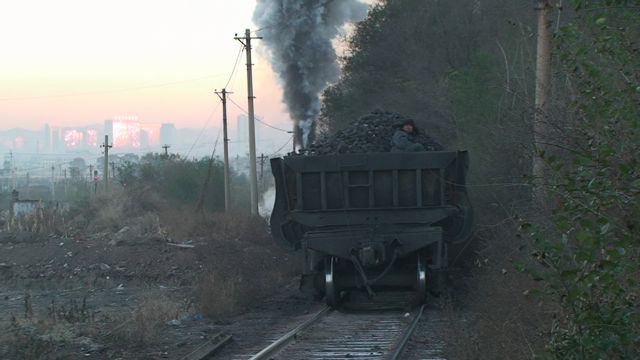
The rising sun glints off the Fuxin apartments in the background as an early morning spoil train climbs to the tip.
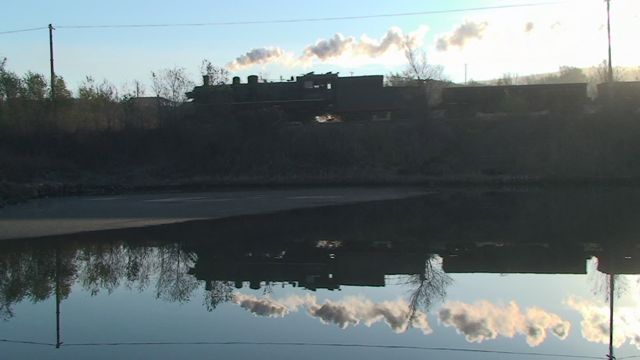
Empty spoil train descends from the tip past the fishing pond.
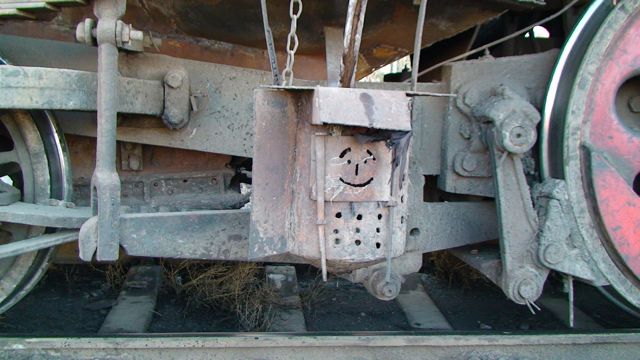
Below the cab of SY 0770 someone has created a smiley face.
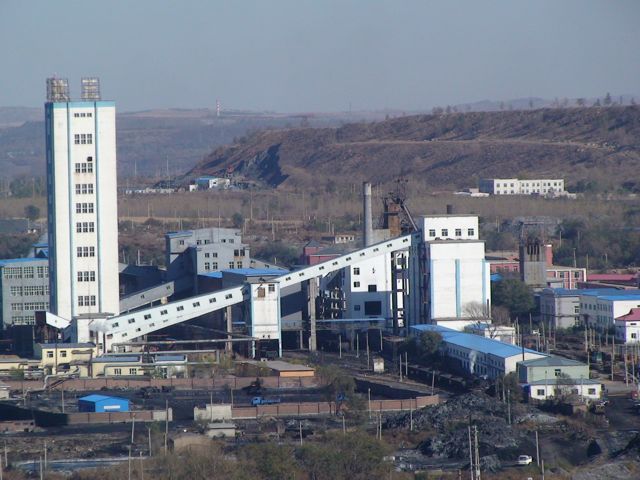
With excellent clarity, the view from the spoil tip down to Wulung Mine with a tender first SY on empty wagons bottom right.
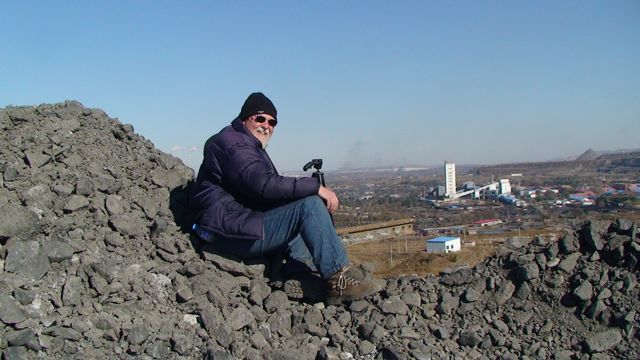
From our perch on the spoil tip we could survey the scene towards Fuxin and Wulung Mine.
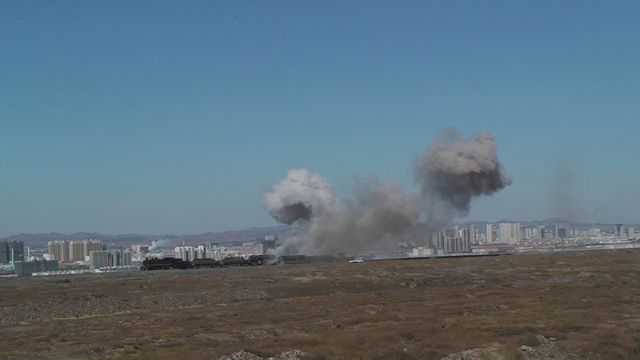
Tipping power station fly ash - the overview with the high rise apartments of Fuxin in the background.
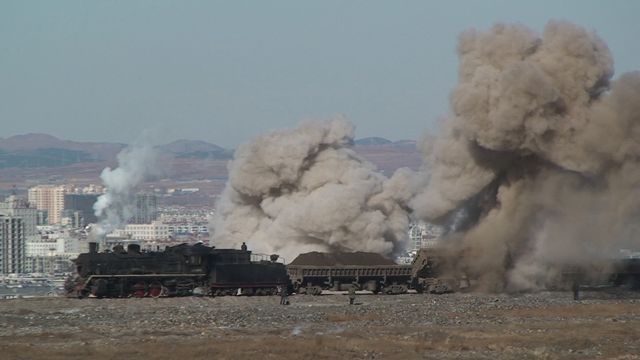
Second to last wagon tipping - two distinct clouds are visible, on the right from the wagon and on the left from down the hill.

La piece de resistance - the wagon closest to the loco is tipped. On that note, we left Fuxin for Daobingshan.
9 Nov Day 20. Tiefa regular passenger train and loco depot, overnight Daobingshan
We watched the 07:16 passenger depart Daobingshan and then had two goes at the chimney first return working prior to completing permissions and other paperwork at Daobingshan station. We visited the museum at Daqing and the long shed containing two rows of stored locos. In the afternoon, some rode the afternoon passenger while others checked out locations for tomorrow. We finished at Shaoqing with the departure of the 16:53 from Daqing. The two steam locos performed various freight tasks during the night (power station shunt) and day (trips to Shaoqing and Shaoming) as well as one of them operating the passenger trains. It has to be said that Tiefa is a pale shadow of its former self but at various times Daobingshan, Sanjiaze and Shaoqing/Daqing provide some action. A variety of diesels are also in use including two Beijing BJ diesels. There is also a line of dumped DFH3 at Shaoqing.

One of two working SY, SY 1770 waits to attach to the 07:16 from Daobingshan to Daqing.

Stored locos at Daqing with the KD6 (American S160) from Yuanbaoshan on the left.
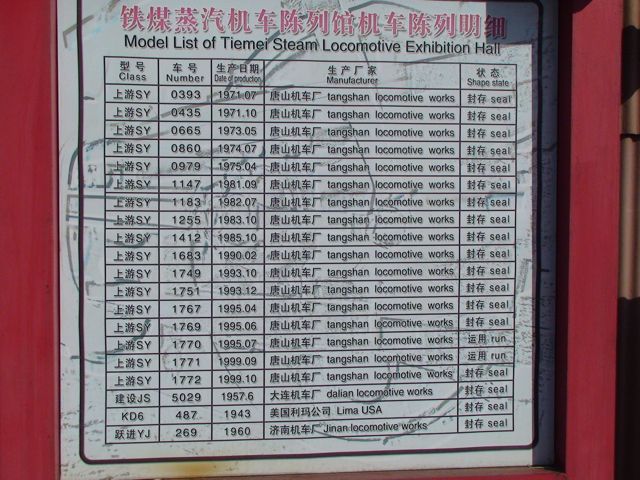
Fairly accurate list of the stored locos at Daqing. SY 1770 and SY 1771 were the working locos. SY 1772 (the last one produced) has been repaired but its rods are not attached. The locos are 'stored in working order' but some look in much better condition than others. Most have been stored since 2004 or 2005.
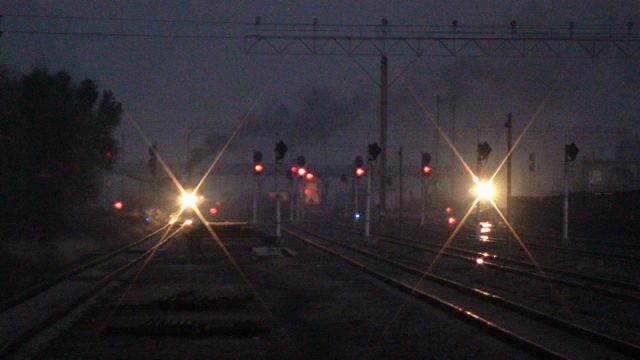
SY 1770 waiting to depart from Daqing with the 16:53 to Daobingshan.
10 Nov Day 21. Tiefa (extra passenger
train on the scenic line to Faku on Saturdays)
afternoon transfer to Jinzhou (4 hrs)
By arrangement, the Faku train left tender first and we went out to the countryside near the lake to photograph its return. The conditions were hazy but this improved late morning. The loco was turned to operate the afternoon working chimney first and we caught this on the river bridge close to Diaobingshan prior to driving via Fuxin to Jinzhou.
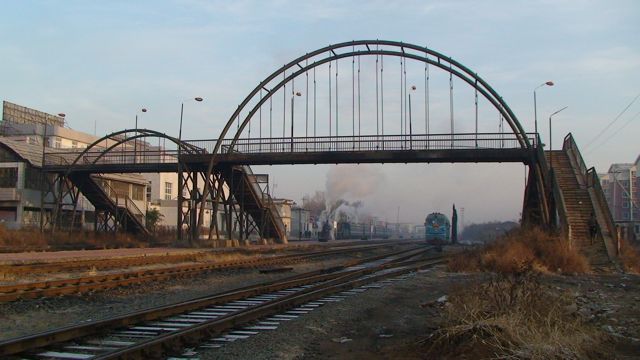
Diaobingshan: SY 1770 on the morning train to Daqing on the left with a decorated DF4 diesel on the right.

Afternoon train to Faku and beyond hauled by SY 1771 crossing the river bridge shortly after leaving Diaobingshan station.
11 Nov Day 22. Visit to Bajiaotai power station with JS shunt, return to Beijing by high-speed train from Jinzhou Nan, overnight Beijing, end of tour
No pictures of Bagiaotai as I wasn't first off the bus in the rain and by the time I thought about it the security guard was rushing off after the front runners to stand in front of their picture of the two JS in steam on shed and send them back to the bus. We sent Jun in twice to see if any action was planned and had a fun half hour watching crazy drivers drive into a flood under a road underbridge and get stuck. We saw 3 vehicles get water in their electrics and stall in the water and about 3-4 trucks and buses that made it through successfully before we decided to levae the area as there was no coal to bring to the power station from China Rail and no information about taking empty wagons to the exchange sidings. To fill a bit of time, we drove round to the Jincheng reed railway near Linghai. I visited an saw this working several years ago but a later Japanese visitor reported the line to the reed beds removed. What was not clear was whether the railway was still used internally and I'm please to report it is. One loco was seen transferring reeds and also reed mats to the paper mill. Security was especially unfriendly and we left after seeing a couple of movements. Lunch and transfer to Jinzhou Nan in the snow for a high-speed train to Beijing. So ended the trip.
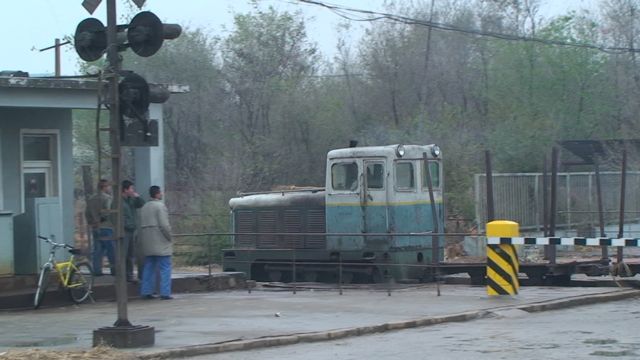
Loco on the road crossing approaching the factory sidings.

Loco and shunters wagon heading back to the reed storage area for more loads.

Reeds are now brought in by road truck - an example is on the left.
For the line in better days see jincheng.html on this site.
Your comments on this blog are welcome.